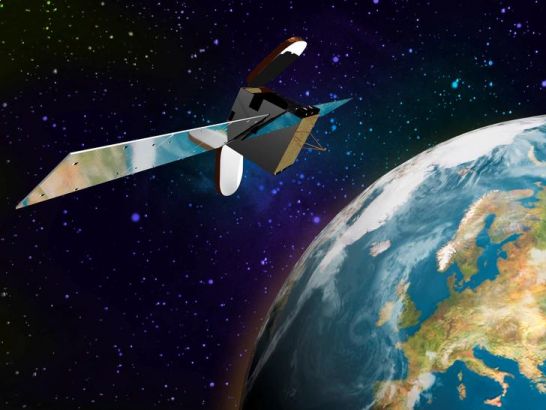The telegram was issued last Saturday to all aviation authorities in the USA, and on Sunday a fireball was already reported over Texas, however it is not clear whether these are indeed the fragments of the Iridium satellite

On Saturday, the Federal Aviation Authority, FAA, issued a notice to airmen (NOTAM) with the following warning: "FDC 9/9502. Special notice, effective immediately until further notice. Advice for aircraft to be aware of the potential danger inherent in the penetration of satellite fragments into the atmosphere of a globe Ha'aretz. Additional telegrams will be issued if more information becomes available. For the sake of flight safety, it is important that all pilots and aircraft crew members report to the nearest airport any sighting of space debris penetrating the atmosphere, including the location, height, time and direction of the observed debris."
The CBS MEWS news site that received the telegram says that the fear is likely of large fractures from the collision that happened on Tuesday that passed between the Iridium 33 satellite and the Russian Kosmos 2251 satellite. As early as Sunday, pilots reported at least one fireball and the sounds of explosions, apparently a boom over Texas, but the FAA spokesperson said that it is not known whether the sighting referred to space debris and if so , is this space debris from one of the damaged satellites.
It is possible that after all it is a ball that was created as a result of a large meteor burning in the atmosphere.
The analysis of the fragments by the AGI company resulted in the conclusion that the spacecraft collided at a speed of about 15,000 miles per hour (about 23 km) and created two large clouds of fragments that continued in the original orbit of the satellites. (see also How and why did the two satellites collide?) The tracking of the cosmos fragments showed that they did not arrive in the US on Sunday, the day the news was published, but the iridium fragments did arrive, but it is still unclear whether fragments of a relatively small satellite, which is at a high altitude above the atmosphere (although still in the considered low orbit) can reach the ground in just five days.

6 תגובות
Some things are not to be laughed at.
Aria, these fragments tend to become very hot (and glow with great intensity) upon entering the atmosphere and also leave a trail of smoke behind them (I think), so if such a fragment comes from above in front of the plane and is in the pilot's field of vision, then the pilot has a good chance of noticing the approaching fragment and avoiding it towards Other.
rummy.
Come in urgently!!!
Dude this reminds me of the time of the Lebanon War 2, it was so scary, every day when I was going to work and back I kept looking up at the sky to check if there wasn't some Katyusha or rocket that was going to fall on my car hahahaha…… 🙂 (there were a lot of nearby explosions) I was constantly preparing to run to the side with the car to avoid being hit.
How is an airplane supposed to be careful of satellite crises? Probably in this case caution will not help. It's a semantic matter and it seems that the original intention is to keep an eye out and report.
How is a plane supposed to warn of satellite crises?
Is the claim (I forgot the name of the researcher who claimed it) that a chain reaction will be created - a collision creates many parts and therefore the chance of more collisions, which create many more parts, etc., up to the creation of a cloud of fragments around the Earth - is beginning to be realized?
The argument, as I understand it, is based on the high relative speeds of the bodies that orbit the earth, so that even a collision of a satellite for example with a relatively small body (say a stray screwdriver that escaped on a spacewalk) creates many fragments.